Inspired research and controlled kleptomania
Solid facts enhance your writing and safeguard your credibility
At the end of a frenzied day in the hallucinogenic squalor of Old Delhi, I was startled when a young boy in the spice market blocked my path and poured into my palm a handful of green cardamom. Unlike almost everyone else I had encountered in the sea of peddlers and beggars that day, he was sweetly giving—not selling—me something. “Very valuable,” said my guide, an octogenarian Englishman, after I’d thanked the boy. “Crush it up, put it in your cup, and you’ll have Earl Grey for bed tea.”
I loved that scene, and wanted to use the pungent quote as the last line in a travel story I was writing on India. The problem? Cardamom gives its distinctive flavor to masala chai, not Earl Grey tea.
This is just a tiny example of how facts can bedevil the writer, and how even the slightest inattention to factual detail can undermine the credibility of your work. Getting the facts right always matters, whether you’re a Tom Wolfe wannabe, an ambitious novelist, or a tourist with an itch to publish. Every writer needs to know how to separate fact from fiction—and how to gather the real-life details that make a narrative bristle with life.
Hit the library
Gathering facts starts with the research you do before you start to write. I like to start my fact-finding the time-honored way—at the library.
Once, in doing research at the Library of Congress, a librarian asked me if I had a research plan when I requested guidance. “Sure,” I mumbled.
“Is it on paper?” he asked. “It’s not a plan until it’s on paper.” Since that day I’ve made a practice of mapping out a research plan, even if it’s little more than a to-do list.
The first things I look for at the library are resources that provide a wide view of my topic. Fact-gathering for my Delhi article began weeks before the trip. Travel books on India provided me with good contemporary information. Next, I looked to fiction. Rudyard Kipling’s short stories helped to give me a rich sense of place. Literary nonfiction on Delhi, including William Dalrymple’s City of Djinns, further enhanced my research.
Facts in fiction
It’s important to get your facts straight, even in fiction. Factual details ground your characters in time and place and affect the overall tenor of the story. Play loose with the facts and you may break the spell of the world you’re creating. These reporting methods will help you find useful facts for your fiction:
- Ask a librarian for a few of the best history books covering the era you’re writing about.
- Dig up primary source material. Many libraries subscribe to online databases that contain everything from speeches to unpublished letters and memoirs.
- Go beyond the front page. Local magazines and newspapers provide useful information. Don’t just look at the front-page news, however. The lifestyle section can contain a wealth of cultural facts.
- Historical societies keep vast amounts of material on neighborhoods, houses and citizenry. Old photos and illustrations will help you visualize the fictional world you’re creating.
- National periodicals such as the Saturday Evening Post and Life may help provide a larger cultural context of an era, including the food, dress and home life.
- Period literature will help you identify speech patterns of a particular region.
Digital research
Once I’ve gotten a nose for the subject and narrowed my focus, I turn to the Web and online databases. I download the best articles for my research and read up. This background reading acquaints me with my subject and helps me figure out what’s already been covered and what may still be virgin territory. This extensive background research also provides potential sources to interview later.
My favorite database, Lexis-Nexis (lexisnexis.com), catalogs articles from thousands of newspapers and newswires and makes them searchable by keyword. If you don’t want to shell out the fee for Lexis Nexis, Google news (news.google.com) is a good free way to search current events from thousands of news sources. Additionally, many public libraries provide free online databases like ProQuest through their websites.
The trick is determining which articles are worthwhile. If I’d started my research by typing “Delhi” into an Internet search engine, I’d have spent hours slogging through irrelevant entries. Although the Internet can be a good source of information, be skeptical of what you find. Ask yourself: is the information accurate? Who compiled it? Is the publisher a reputable source? For example, I’d consider information about a New Delhi hotel from the hotel’s own website to be a primary source that meets my standard for reliability. Information from a random travelers blog, or a site trying to sell rooms, may not meet that standard.
If you’ve done your research well, you’ll have all of the relevant facts at your fingertips. You’ll also have a sense of key people with expertise or information. Now’s the time to start the interviewing process to supplement your research. Interview not to learn the basics but to answer that one question that wants an answer, to elicit that vivid anecdote, or snag a zingy quote.
Even with modern technology, many reporters still prefer taking notes rather than using a tape recorder. A notebook can be less intrusive, and you aren’t stuck with hours of tapes to transcribe. Here are some tips on how to take more effective notes:
- Always record the date and time when jotting down notes.
- Develop your own shorthand and don’t record “filler” words.
- Sometimes, when a source is shy or uncomfortable, it may be necessary to do without a notebook. Develop a strategy for those times, such as excusing yourself from the room to scribble furiously what you can.
Interviewing
My research plan includes a source list of everyone I hope to interview for a story. Talking to multiple sources is the best way to make sure you have the facts straight and that you have a well-rounded perspective.
When interviewing, don’t ever rely on your memory. Keep your notebook at the ready, and write things down as they occur. If the phone rings or you’re otherwise interrupted, take advantage of the dream opportunity to note details about the setting. Record the pictures, books, and ambiance of the room. Make a practice of jotting down on-the-spot observations. Learn to take notes on the scene and to capture physical characteristics and mannerisms, as well as the rhythms of your source’s speech. Even if you tape interviews, keep a notebook handy for capturing the subtle, descriptive details.
Questions to ask at the interview:
- What’s the correct spelling of your name?
- Do you have an anecdote that illustrates your point?
- Is there anything else you’d like to say about this subject?
- What’s the best way to reach you?
Other people can always dispute your account, but notes can get you through skirmishes over the truth. Reporters notebooks are critical evidence in libel trials. They’re also a defense in less serious scrapes. A student once disputed my account of a graduation ceremony in which I noted that speaker Jerry Brown was wearing a green armband in sympathy with dissident students. I showed my editor my notes and the issue was closed.
Cameras and controlled kleptomania
Another good tool to keep close at hand is a camera. This is a great way to capture visual details you may quickly forget. Travel writers may use a camera to record the details of a street scene, the signs in a shop window, or the jaunty hat of a local.
I think the most underrated research method is what I call controlled kleptomania. When researching a subject, lift all the business cards, brochures and pamphlets you can get your hands on. Be sure to get the business card of anyone you interview so you’ll have the accurate spelling of his or her name, plus a phone number and e-mail address if follow-up is required.
Developing sound journalistic habits will strengthen your writing. Be thorough, and don’t depend on your subjects to get their facts right. Some reporters wrongly believe that as long as someone tells them something, and the fact is attributed, they‘ve done their job. Remember: Sources can be wrong. Double-check whenever possible.
Which brings me back to my Delhi story. As part of my habit of double-checking facts, I consulted a book on tea and discovered that bergamot oil, not green cardamom, flavors Earl Grey tea. Thanks to my source list, I was able to contact my guide again and ask him whether he meant masala chai. He did, and I got my ending.
—Constance Hale
A version of this article appeared in Writer’s Digest.
| |
Share This:





